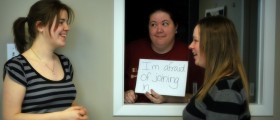
Acute cerebellar ataxia is a nervous system disorder that commonly features with problems in coordination (uncoordinated muscle movement). Ataxia is a medical term and represents a neurological sign that consists of gross lack of coordination of muscle movement. Cerebellar means that the problem originates from the cerebellum. The cerebellum is a part of the brain in charge of balance and coordination. Some disorders that affect the cerebellum may cause coordination problems and ataxia.
The condition usually features with abnormal muscle movement of the limbs. However, it is possible that patients also suffer from abnormal eye movements and additionally develop nausea and vomiting.
The condition may affect people of all ages. Still, it is most common in young children and tends to develop after certain viral infections. The symptoms and signs linger for a few months and the recovery is complete.
What Causes Cerebellar Ataxia?
As it has been already mentioned cerebellar ataxia usually develops after certain viral infections. Different viral infections may represent introduction to the condition including chickenpox, coxackie virus, Epstein-Barr viruse etc. Furthermore, some people develop cerebellar ataxia after bacterial infections such as Lyme disease and the condition may also occur due to exposure to toxins and heavy metals (alcohol, thallium, lead, mercury etc.). Exposure to organophosphates is one more potential cause of cerebellar ataxia.
Clinical Characteristics of Cerebellar Ataxia
The condition typically features with uncoordinated movements of the extremities and trunk, clumsiness, unsteadiness, speech disturbances, visual problems and abnormal movements of the eyes. Furthermore, some patients may complain about headaches, dizziness and there may be noticeable change in their mental status. Chaotic eye movements and clumsy speech pattern are characteristics of more severe form of the disease.
Diagnosing Cerebellar Ataxia
After investigating patient's symptoms and family history the doctor performs a physical and neurological exam. He/she may need to perform several more test and exams such as lumbar puncture, CT scan or MRI of the head, blood tests, urine analysis, nerve condition study and electromyography. It is essential to rule out other conditions prior to setting the final diagnosis.
Treatment for Cerebellar Ataxia
In many cases symptoms and signs withdraw spontaneously without any treatment. Once the underlying cause is identified the treatment is focused on the particular cause. In severe forms of the disease patients may be treated with corticosteroids, intravenous immunoglobulin or plasma exchange therapy. Some medications may improve muscle coordination. They include clonazepam, amantadine, gabapentin and buspirone. Additional help is obtained from physical and occupational therapy.
There is no effective way to prevent cerebellar ataxia. The only means that may reduce the occurrence of the disease is proper vaccination against certain viruses that may be associated with acute cerebellar ataxia.

















Your thoughts on this
Loading...